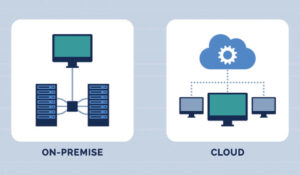Mike Palmer at Spearline discusses the benefits of migrating your contact centre channels to the cloud.
Inbound Voice Reigns
Voice remains a preferred channel for customer communications. In fact, ContactBabel’s research indicates that telephone calls account for 66.3% of interactions.

Steve Morrell
According to Steve Morrell at ContactBabel: “Voice will remain the channel of choice for complex and multiple interactions, due to the opportunity for quick-fire Q&A branching into different subject areas, the superior speed of speech over typing and the reassurance of speaking to another person.”
Inbound voice continues to be the primary customer contact channel. However, some studies do show a gentle decline, with younger consumers specifically opting for alternative channels.
While alternate channels and self-help combine to reduce call volumes, the conversational voice user interface’s rise expects to reaffirm the voice channel’s importance and dominant position.
Cloud Migrations are on the Agenda
The energy around cloud migration continues to accelerate as businesses find the benefits of functionality without infrastructure-related costs. Cloud services have also emerged with superior reliability and business continuity capabilities.
Feature and functionality developments in the market appear to be highly focused on the cloud. What businesses must understand is that they will ultimately need to move to the cloud to remain competitive.
Why Move to the Cloud?
Drivers for moving from physical premises-based contact centres to the cloud include added functionality, reliability, and accessibility of services. Key benefits organizations seek are:
- Improved customer experience – Cloud services are where today’s innovations are being focused and by leveraging these, evolving customer expectations can be exceeded.
- Service reliability – With high availability services achieving impressive uptime stats, businesses can focus on service delivery knowing customers and agents are connecting with all the necessary support data to address a customer need.
- Scalability and flexibility – Cloud services offer incremental scalability so that one or a few agents can be added readily without the need for planning massive server deployments, etc. They offer the flexibility to configure new channels or features simply and quickly to enhance processes.
- Operational efficiency – A significant benefit of a cloud deployment is that costs are notably lower than with on-premises hardware-based systems. Additionally, the included toolsets and functionality offers opportunities to tune business processes, delivering improved service at a lower cost.
- Leveraging AI – Artificial Intelligence is a key technology promising huge potential. Contact centre tech will leverage AI for more “human-like” chatbot interactions and self-service interfaces, predictive modelling, and more. To take advantage of these rapidly evolving technologies, businesses are best positioned in the cloud.
People Still Have Concerns With the Cloud
Businesses that have not completed that journey may continue to have reservations. These can include apprehensions driven by data security concerns, lack of expert resources, uncertainties around compliance, and more.
Significant concerns are often expressed about the migration itself. While cloud services are extremely flexible when adding new functionality, etc., migrating business processes from legacy platforms to the cloud can be delicate.
Many professionals express that their migration was more challenging and took more time than originally planned.
Regarding telephony, it is critical that inbound services are directed to new termination points cleanly and that the move to the cloud has not adversely affected call routing and impacted the customer experience.
Once a call is delivered, recreating call routing logic in the cloud will further alter the caller’s path to an agent.
The transition to the cloud is not for the faint-hearted, with project teams taking great care to ensure that QoS (Quality of Service) is enhanced and not impacted by technology issues.
Poor audio quality threatens customer satisfaction, impacts revenue, and tarnishes brand image. But the biggest risk is not having full visibility when these issues occur.
A Solution for Measurement Pre-and Post- Migration

Mike Palmer
Careful measurement of pre-and post-change voice quality is can be very helpful because the voice channel is an essential link to the customer, and the quality of that voice channel will directly impact the quality of customer interaction.
Companies like Spearline automatically test high volumes of toll and toll-free numbers with management alerts for non-functioning numbers. This allows you to monitor, measure, analyze, report and perfect your number performance.
Author: Guest Author
Published On: 3rd Dec 2020 - Last modified: 11th Apr 2024
Read more about - Guest Blogs, Spearline, Steve Morrell















